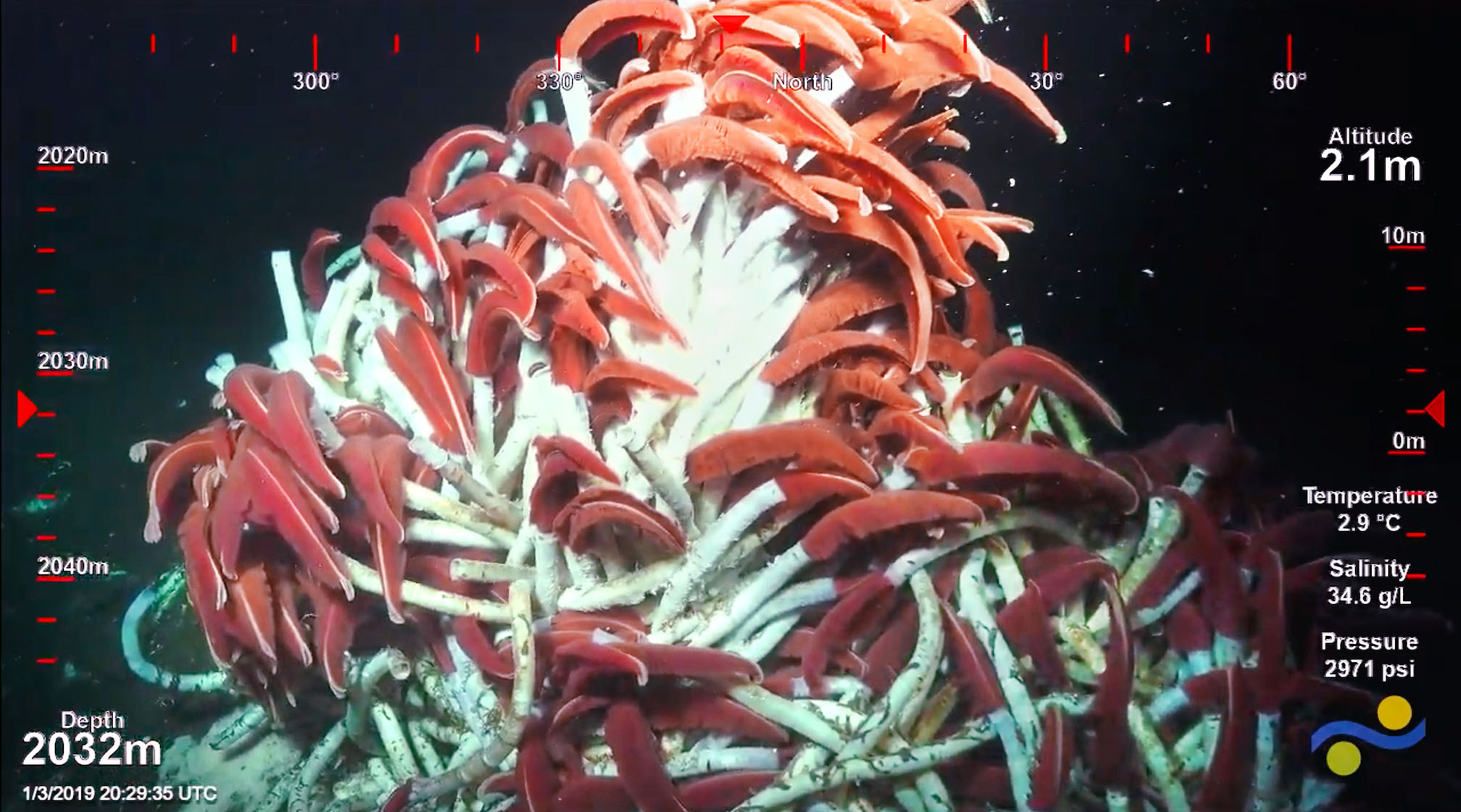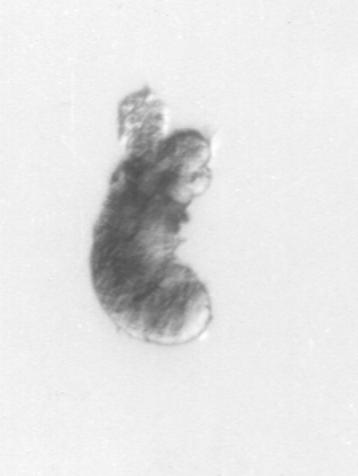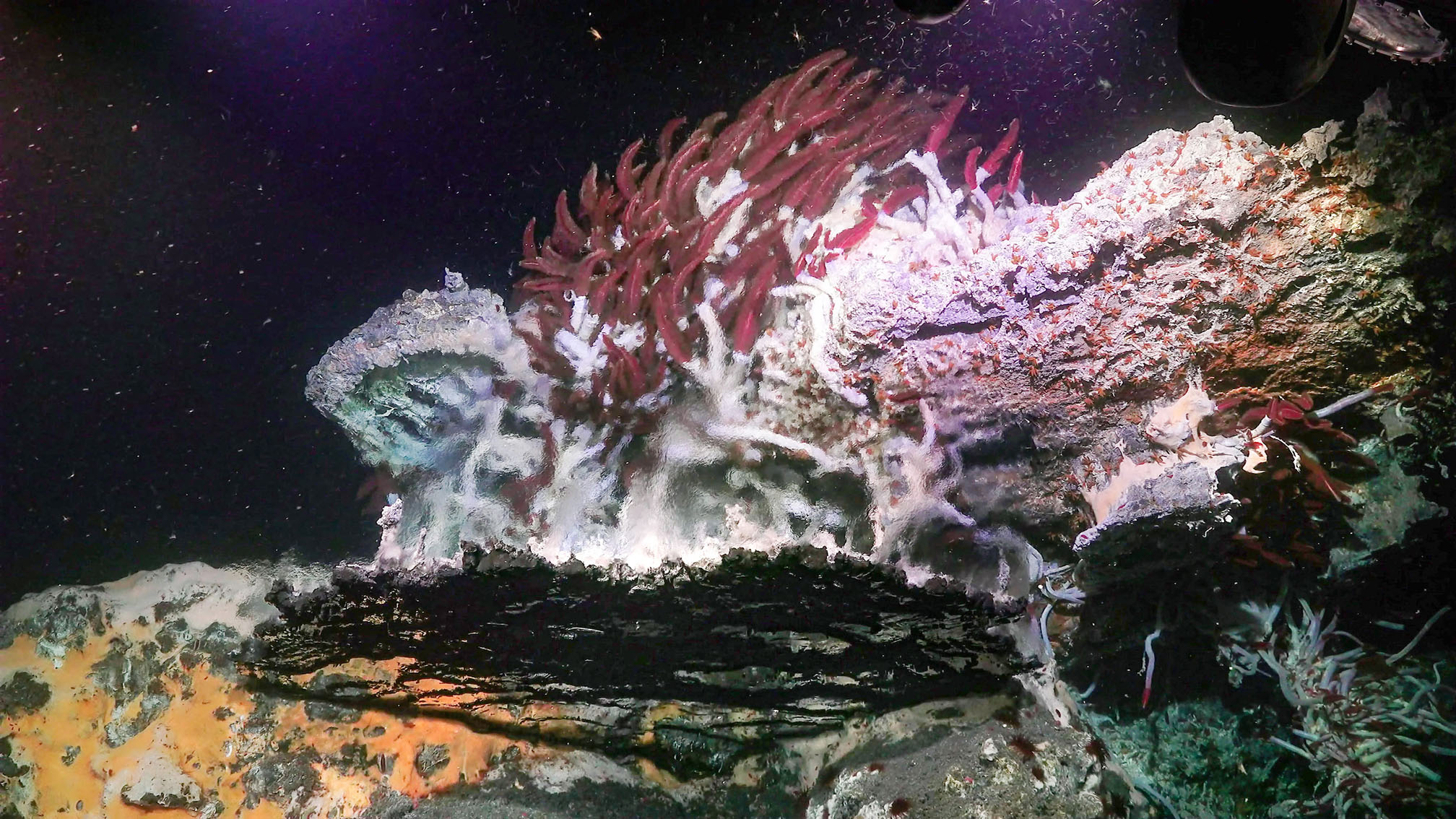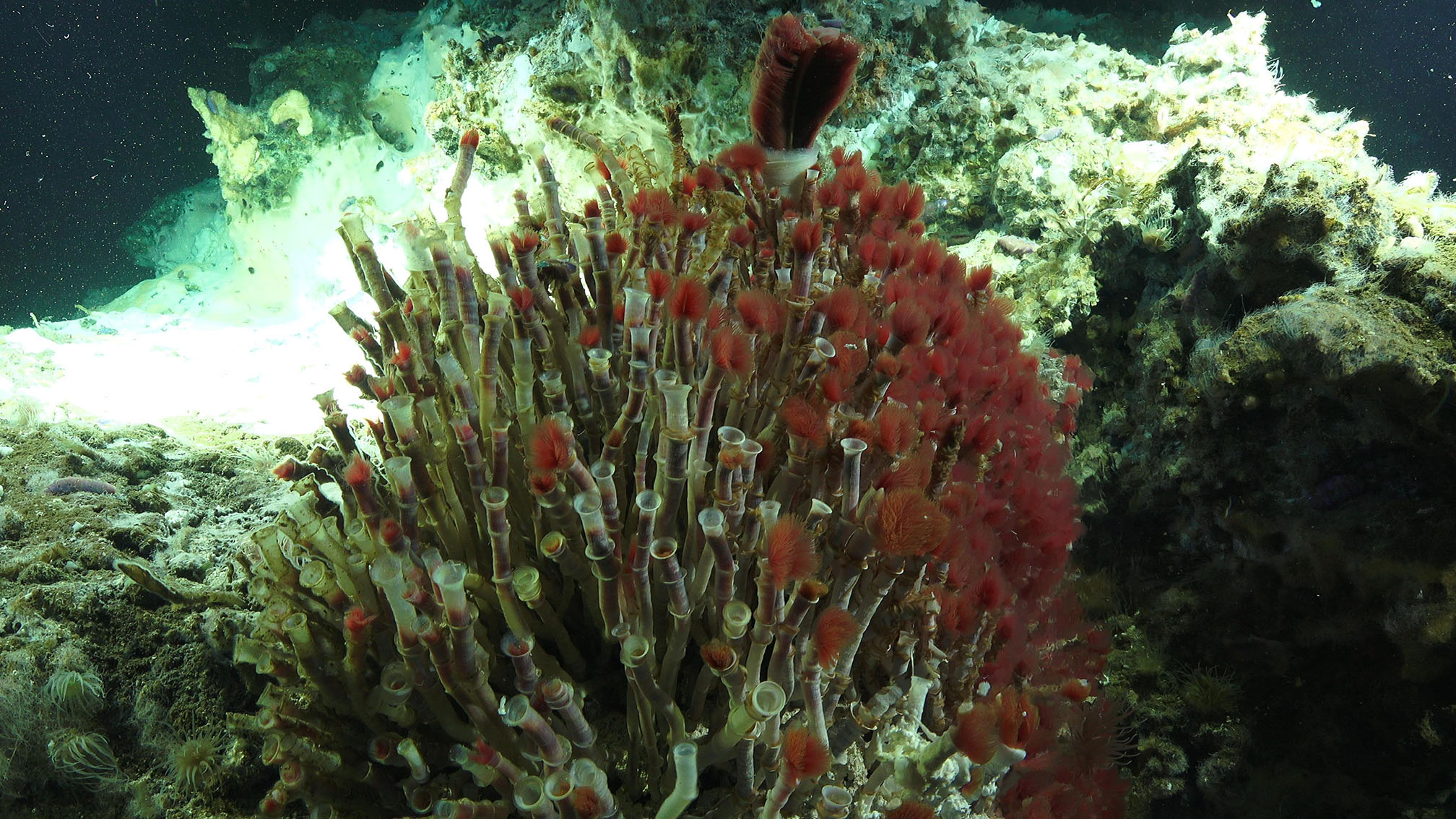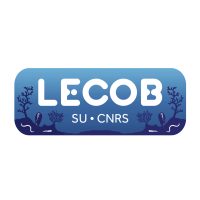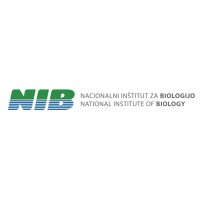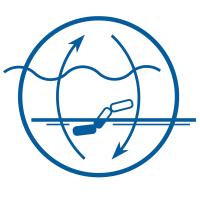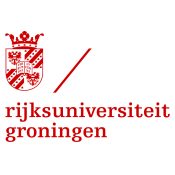Expedition dates: June 29 – July 28, 2023
An important mechanism in ocean ecology is dispersal—– tides, currents, winds, and waves move larvae from one place to another with the potential to create new communities. While dispersal is well studied and understood in shallow ecosystems, how dispersal works for many hydrothermal vent species is yet to be determined. Dr. Monika Bright and her international team suspect the mechanism for building new hydrothermal vent ecosystems exists beneath the seafloor. They hypothesize a teeming community of protists, bacteria, fungi, animal larvae, and even small adults thrive underneath hydrothermal vents, changing in space and time. She suspects this subseafloor ecosystem facilitates the conditions for life dwelling on the vents, spreading animal larva and microbial communities between vent fields through water being sucked into and pumped out of the Earth’s crust. Her team will voyage to the East Pacific Rise to study life beneath the vents and determine the drivers for how hydrothermal vent communities form in space and time. The team will be joined by acclaimed artist, Max Hooper Schneider, who specializes in creating sculptural otherworldly ecosystems out of recycled materials.
Dispersal and Settlement: How Biological Communities Form
One of the most common reproductive strategies in the Ocean is larva dispersal, a process where animals release their young into the open sea. Once eggs, sperm, or fertilized eggs develop into larvae and disperse, the open seas serve as a nursery ground. Species commonly affiliated with seafloor environments will settle as they mature into a more “teenage” stage. Some animals like corals or tubeworms adhere themselves to rocks, either in shallow waters or in the deep sea. Dispersal and settlement are important biological mechanisms for maintaining genetic diversity in the Ocean. Parents cast their young to the sea and rely on the Ocean’s physics to help ensure they reach new areas and maintain the genetic health of the population. While these processes are well-studied in coastal environments, there is little research on dispersal and settlement in the deep sea, especially for hydrothermal vent communities.
Hydrothermal vents are dynamic ecosystems prone to regular disturbances like volcanic eruptions and earthquakes. Some hydrothermal vents have brief lifespans, yet, wherever a hydrothermal vent forms, a biological community almost always follows, and how these animals arrive is yet to be determined. Even more mysteriously, while scientists have plentiful evidence that hydrothermal animals are reproducing, and water samples taken from the surrounding area contain plenty of larvae, those of tubeworms have not been found yet. This suggests that these hydrothermal animals may not only rely on the open Ocean to disperse their young.
Dr. Monika Bright and her team have a different hypothesis for how larvae are transported and create new biological communities on hydrothermal vents. They believe that the larvae, viruses, fungi, and bacteria travel beneath the seafloor and through the vents rather than in the overlying water—this would be a completely new phenomenon in science. To determine if this is the case, they will travel to the East Pacific Rise to conduct experiments with the potential to uncover those potential processes.
Beneath the Vents
The subseafloor is the underground space below the ocean floor, and is made from mud, sand, or volcanic rock. Scientists estimate that the total habitable space for life in the Ocean’s subseafloor is equivalent to 6% of the Ocean’s volume (Hondt et al., 2019). The subseafloor environment is poorly studied, especially in the deep sea, but is suspected to be vital in nutrient cycling and carbon sequestration for our planet. Beyond exploring dispersal at hydrothermal vents, Bright and her team will study the entire community living in the subseafloor below hydrothermal vents, including the bacteria, fungus, and viruses. They will work to determine the role this microscopic, underground community plays in supporting life in the world above them, and suspect it is in this underworld where some hydrothermal animals may acquire their larval stage symbionts.
Additionally, Bright and her team hypothesize that while the subseafloor is a hostile environment for most life, the bodies of smaller organisms are more likely to withstand it. The team believes that their travel time through the earth’s crust from one vent to another may be relatively short, taking only a few hours before the larvae reach the surface again.
Tica and Research Methodologies
The Underworld of Hydrothermal Vents team will travel to the East Pacific Rise to conduct their experiments, specifically on a well-documented vent site known as Tica. They have chosen a well-studied area so that their research may contribute to the body of knowledge on these vents. First, they will attach an in situ mass spectrometer, a device for measuring molecules and isotopes, to ROV SuBastian. The scientists will use this sensor to create complete environmental and chemical profiles of the subseafloor around the vents.
The team will also collect rock, fluid, and animal samples from the surface and fluid samples from the subsurface, using ROV SuBastian’s pumps and robotic arms. They will cover then the surface with a custom-designed mesh box and a staining box to dye all the remaining animals. Leaving the mesh box for some time will allow larvae and small animals from the subsurface to settle in the mesh. Collecting fluid in the mesh box and rocks up to 10 cm below the seafloor afterwards will allow to distinguishing between previously stained and newly settled unstained animals on the rocks to examine the communities living in fissures in the earth’s crust. Through these collections and experiments, the team will paint a holistic picture of ecosystems in the subseafloor around Tica, potentially providing answers to the question of how hydrothermal vent communities form.
Data & Publications
ADCP data, curated by University of Hawaii, can be accessed here.
- 30 Day Preliminary Cruise Report: The Underworld of Hydrothermal Vents
- Bright, M., Gollner, S., de Oliveira, A., Espada-Hinojose, S. Fulford, A., Vincent Hughes, I., et al. (2024). Animal life in the shallow subseafloor crust at deep-sea hydrothermal vents. Nature Comms. 15, 8466. doi: 10.1038/s41467-024-52631-9. [This article has been published as OPEN ACCESS].
In the News
Under a Hellish Ocean Habitat, Bizarre Animals Are Lurking
The New York Times • August 8, 2023
Scientists make eye-opening discovery in deep sea caves
Mashable • August 8, 2023
Scientists discover new ecosystem underneath hydrothermal vents
Phys.org • August 8, 2023
SOI Says New Ecosystems Found Beneath Hyrdrothermal Vents
Marine Technology • August 8, 2023
Strange Ecosystem Found Thriving below Seafloor Hydrothermal Vents
Scientific American • August 9, 2023
Life discovered in deep-sea volcanic holes, scientists say. See the ocean creatures
Miami Herald • August 8, 2023
Life Has Been Found Beneath Hydrothermal Vents For The First Time
IFLScience • August 8, 2023
New ecosystem discovered thriving beneath Earth’s seafloor
India Today • August 9, 2023
Scientists Find Whole New Environment Under The Ocean Floor
Giant Freakin Robot • August 9, 2023
Scientists Find A Whole New Ecosystem Hiding Beneath Earth’s Seafloor
ScienceAlert • August 9, 2023
Scientists discover new ecosystem underneath hydrothermal vents
EurekAlert | AAAS • August 8, 2023
Into the underworld: New ecosystem found beneath hot smokers
Diver Net • August 10, 2023
Scientists Discover Life Below an Underwater Volcano-Where It’s 700 Degrees
Newsweek | Better Planet • August 10, 2023
Huge Discovery: Unveiling a Hidden Ecosystem Beneath Earths Seafloor
Heartland Magazine • August 9, 2023
Exploring the Hidden World: Discovery of Strange Creatures and Ecosystems in the Pacific Ocean
Breaking Latest News • August 10, 2023
Unveiling the Enigmatic Depths: Exploring the Hidden “New World” beneath the Sea
softonic • August 10, 2023
Strange ecosystem discovered beneath the ocean’s hellish hydrothermal vents
boingboing • August 10, 2023
Hidden underworld filled with never-before-seen creatures discovered beneath the seafloor
Live Science • August 9, 2023
A New Ecosystem Has Been Discovered Underneath Oceanic Hydrothermal Vents
Astrobiology • August 9, 2023
‘Dark life’ ecosystems are thriving under hydrothermal vents
interesting engineering • August 10, 2023
A new ecosystem full of unknown creatures has been discovered beneath the ocean floor
Movie Online • August 12, 2023
Underworld Hidden Beneath The Seafloor Filled With Never-Before-Seen Life
brobible • August 11, 2023
Scientists Discover New Ecosystem Beneath Earth’s Seafloor
Editorialge • August 12, 2023
Scientists discover ecosystem of strange critters thriving beneath volcanic sea floor
FOX8 • August 10, 2023
Scientists Find A Whole New Ecosystem Hiding Beneath Earth’s Seafloor
Good News Network • August 15, 2023
Scientists Discover New Ecosystem Beneath The Seafloor
Explorersweb • August 15, 2023
An Entirely New Ecosystem Just Appeared Under the Ocean Floor
Popular Mechanics • August 17, 2023
A hidden underworld with strange creatures found under the seabed
Dividend Wealth • August 13, 2023
Hidden Ecosystem with Strange Creatures Found Under Volcanic Sea Floor
Nature World News • August 14, 2023
Scientists have discovered a new ecosystem beneath hydrothermal vents
Aviation Analysis • August 21, 2023
Scientists have discovered a new ecosystem beneath hydrothermal vents
CBS Nature Today • August 21, 2023
Scientists uncover a new ecosystem in the depths of East Pacific ocean during recent expedition
Up Worthy • August 21, 2023
Scientists Discover New Ecosystem Underneath Hydrothermal Vents
Ocean News • August 17, 2023
Scientists Discover New Ecosystem Underneath Hydrothermal Vents
Ocean Robotics Planet • August 8, 2023
Scientists Discover a Labyrinth of Life Hidden in the Deep
Hakai Magazine • September 19, 2023
Scientists Discovered New Ecosystem Underneath Hydrothermal Vents
SevenSeas Media • September 1, 2023
